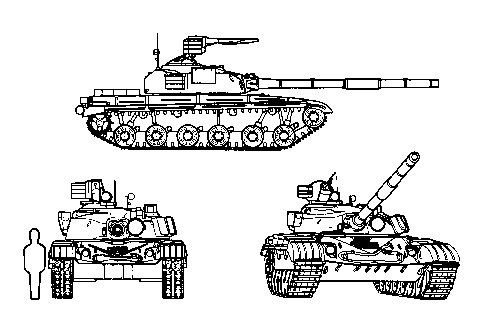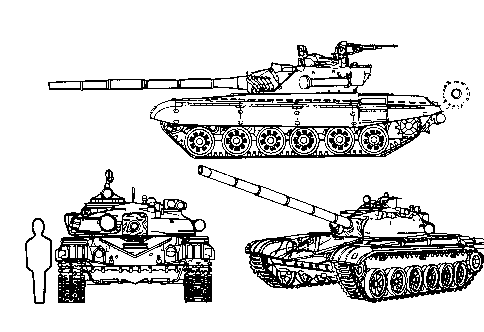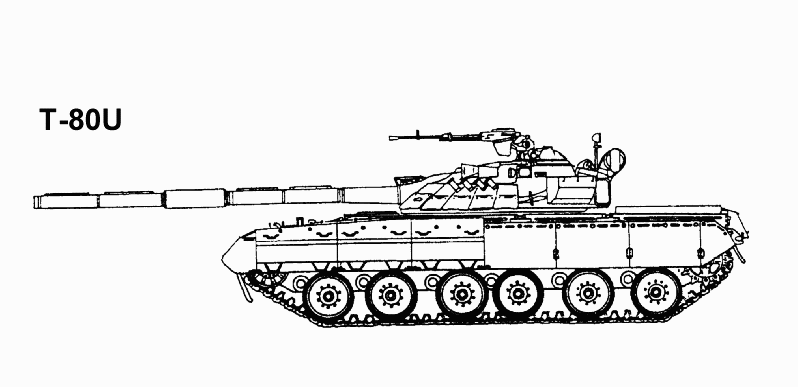The T-64, introduced in the late 1960s, was the first of a sophisticated new family of Soviet main battle tanks
developed as successors to the T-54/55/62 family, the T-64 featured an innovative design incorporating both an autoloader and advanced armor. The T-64 entered production in 1966, was fielded in 1967, and was first seen in public in 1970. Numerous variants were produced during a very long production run.

The T-72, which entered production in 1971, was first seen in public in 1977. The T-72, introduced in the early 1970s,
is not a further development of the T-64, but rather a parallel design chosen as a high-production tank complementing the T-64.
The T-72 retains the low silhouette of the T-55 series, featuring a conventional layout with integrated fuel cells and stowage containers which give a streamlined appearance to the fenders. While the T-64 was deployed only in forward-deployed Soviet units, the T-72 was deployed within the USSR and exported to non-Soviet Warsaw Pact armies and several other countries. In addition to production in the USSR it has been built under license in Czechoslovakia, India, Poland and former Yugoslavia.

The T-80, manufactured by Transmash of Omsk, appeared as production model in 1984,
retaining the basic features of the T-64 series (including the 125mm smoothbore gun with autoloader). Major innovations included the first Soviet use of a gas turnine engine, providing increased speed and power, and the first use of a laser rangefinder providing major improvements in fire control. The T-80 is very similar in appearance to the T-72. It incorporates features common to both the T-64 and T-72, especially in weaponry. Easily distinguishable features of this tank as compared with the standard T-72 are the attachment of side skirts and twelve turret-mounted grenade launchers with seven on the left side and five on the right side.

The T-90 main battle tank, the most modern tank in the army arsenal, went into low-level production in 1993, based on a prototype designated as the T-88. The T-90 was developed by the Kartsev-Venediktov Design Bureau at the Vagonka Works in Nizhniy Tagil. Initially seen as an entirely new design,
the production model is in fact based on the T-72BM, with some added features from the T-80 series. The T-90 features a new generation of armor on its hull and turret. Two variants, the T-90S and T-90E, have been identified as possible export models. Plans called for all earlier models to be replaced with T-90s by the end of 1997, subject to funding availability. By mid-1996 some 107 T-90s had gone into service in the Far Eastern Military District.
Derived from the T-72, the GPO Uralvagonzavod T-90 is the most modern tank currently in service with the Russian Army. Of conventional layout, the T-90 represents a major upgrade to every system in the T-72, including the main gun. The T-90 is an interim solution, pending the introduction of the new Nizhny Tagil MBT which has been delayed due to lack of funding. Produced primarily mainly due to its lower cost, the T-90 it will probably remain in low-rate production to keep production lines open until newer designs become available. Several hundred of these tanks have been produced, with various estimates suggesting that between 100 and 300 are in service, primarily in the Far East.

So the family line looks like this:
.............................
..T-62/64----------------->T-80
T-55--------------------^-------->
.............................
..................T-72--------------------------->T-90